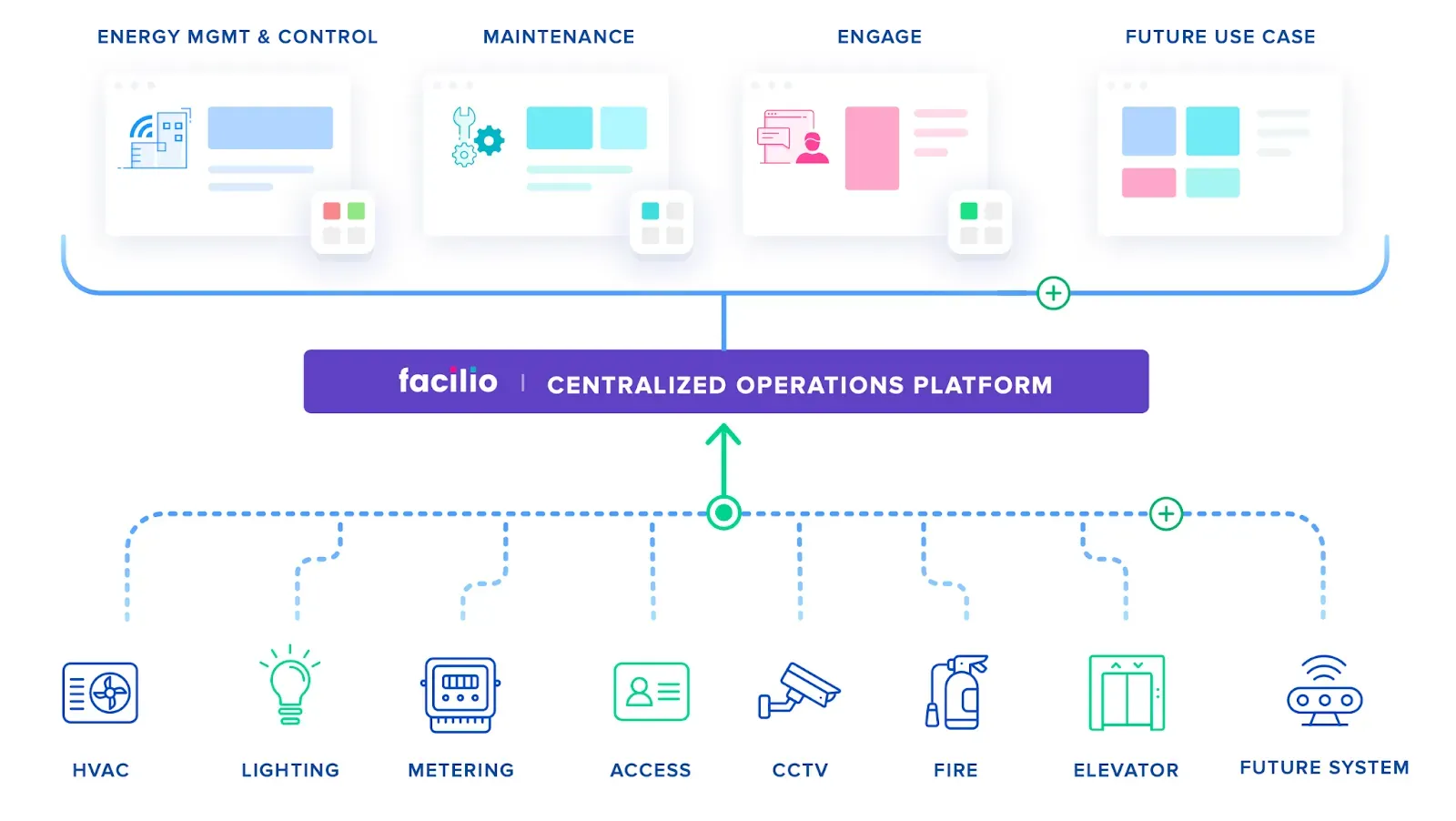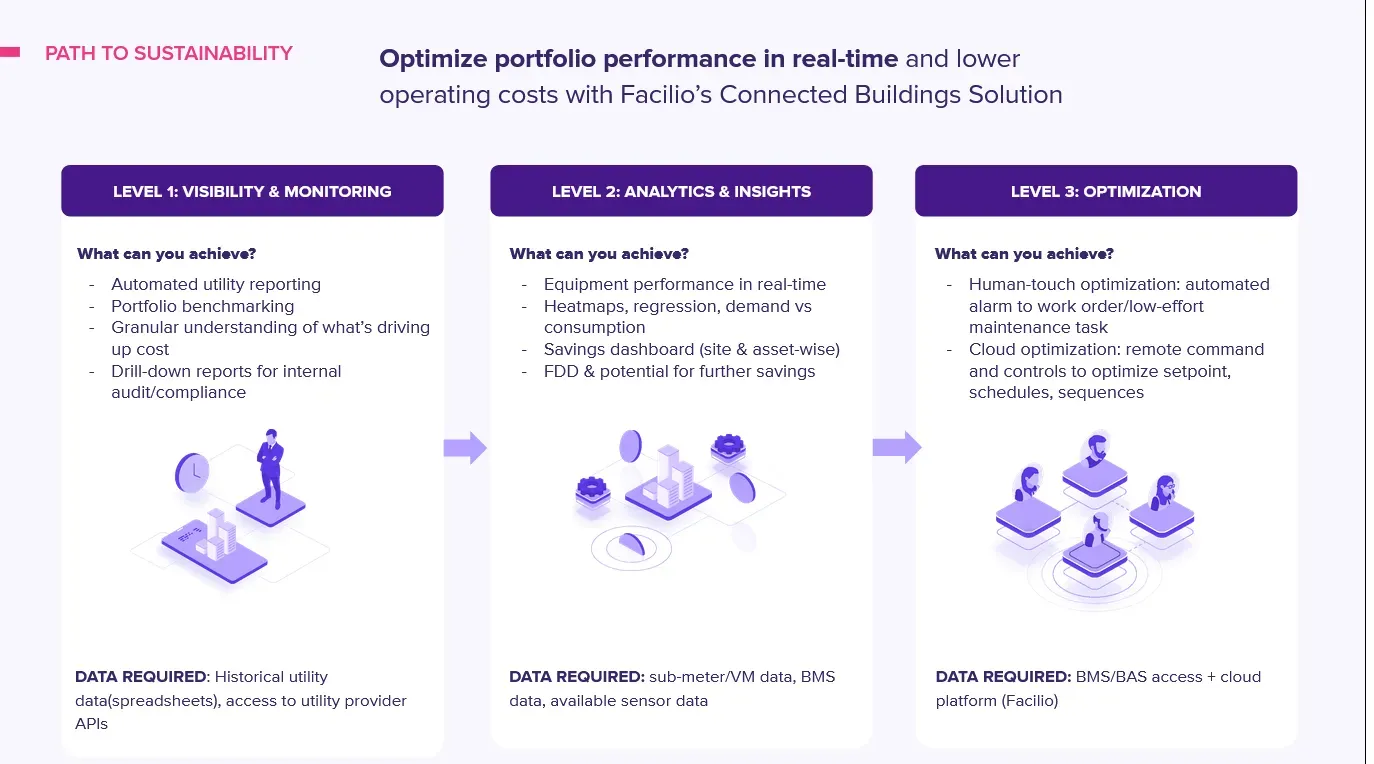Learn what an Energy Management System is, why it matters now more than ever, and how to choose the right EMS to improve efficiency and sustainability.
What is an Energy Management System (EMS)?
An energy management system (EMS) is an elaborate tool or a combination of tools used to monitor, control, and optimize the energy consumption of buildings or systems. It collects data on energy usage, identifies inefficiencies, and implements strategies to reduce costs and carbon emissions and improve overall energy performance.
EMS is widely used in industries, commercial buildings, and smart grids to automate energy-saving strategies.
Implementing an Energy Management System (EMS) can lead to significant benefits.
For instance, organizations adopting ISO 50001, an international energy management standard, have reported substantial energy savings. Delta Electronics in China reduced power consumption by 10.51 million kWh, equivalent to a reduction of 10.2 thousand tons of carbon emissions and a saving of CNY 8 million (approximately $1.2 million).
Let's understand why you need an EMS, their types and approaches to choosing one, how to select the right energy management system for your needs in the next few minutes.
5 reasons you need an energy management system NOW
Sustainability is now a top priority for C-suite executives as governments have started outlining aggressive environmental targets. For instance, the UK’s Sixth Carbon Budget requires a 78% reduction in carbon emissions by 2035 compared to 1990 levels.
Large-scale energy users like commercial enterprises and property chains with a focus on operational efficiency and energy cost optimization can significantly benefit from an energy management system.
Five reasons why you need an energy management system today are:
1. Improves occupant comfort
EMS gathers sensor data from IoT devices and identifies threshold deviations in areas where there is frequent occupancy. Resolving such deviations proactively helps in improving occupant comfort.
Strategies like occupancy-based smart HVAC optimization can save significant energy costs while keeping occupants healthy, productive, and safe.
2. Extends equipment lifespan
EMS not only collates energy records but is also a reference point for all historical information about equipment. It can give information about past repair/retrofitting and aid in identifying fault patterns that require attention. Eventually, it helps in extending the equipment's lifespan.
3. Ensures compliance with local energy regulations
In the United States and around the world, energy regulations have complex reporting requirements. Manually managing these reports is prone to errors and can lead to non-compliance.
Energy management systems automate compliance tasks and streamline the creation of reports while making the process more efficient and reliable.
4. Improves operational efficiency
Energy management systems solve metering and measurement of energy consumption at a grassroots level. They consolidate energy data across multiple sites and regions in a single dashboard, giving a unified view of energy consumption.
The data so collated is used to set internal and external benchmarks, which helps in the optimization of equipment working below benchmark levels.
5. Reduces the carbon footprint
A significant benefit is a tangible reduction in carbon footprint. By adopting a proactive approach, energy management systems promote environmental sustainability and help organizations achieve their building sustainability goals.
Common misconceptions about energy management systems
Despite all these benefits, organizations are still wary about investing in an energy management system. Several misconceptions stop them from considering its implementation.
Like any capital-intensive investment, an energy management system also requires significant upfront capital. However, considering the energy savings, decarbonization effect, and its sustainability impact, it is a worthwhile investment.
Also, modern cloud-based energy management systems can be easily upgraded without requiring the sunsetting of on-premise systems with siloed systems.
Modern energy management solutions can be deployed quickly, often in a span of 2-12 weeks, depending on your needs, of course. This is because they follow a platform approach, which ensures that all necessary systems for different functions are integrated and made usable at the same time.
Facilio, as a cloud-based energy management system, is designed to deliver faster time-to-value and reduce deployment time by three-folds. It can roll out a fully-usable energy management system for your portfolio in 2 weeks or less.
The progress begins with a project review, followed by a pivot launch, building data onboarding, progress check-in, and final roll-out. The deployment process follows a structure that reduces disruption and aids in realizing efficiency gains quickly.
Building blocks of an energy management system
An energy management system is not a single software tool but a combination of hardware and software designed to function together as a whole.
They comprise:
- Meters for recording
- Data analytics suite
- Automation
- Advanced control systems
At the bottom level are meters across each site location that record energy consumption and aid in calculating an estimated cost.
Traditionally, these have been manually operated, wherein technicians note meter readings and enter them manually in spreadsheets or other tracking software.
In recent years, with the help of automation, meter readings can be pulled automatically and imported into energy management systems. They help in the centralized monitoring, visualizing, and benchmarking of energy consumption data.
However, with AI, a large scope of these activities can now be automated. Routine tasks that are repetitive in nature can be automated by energy management systems. They can also integrate third-party systems that may already be in use.
Finally, an energy management system also acts as an advanced supervisory control tool that facility managers can use for portfolio-wide energy management.
The two approaches to choosing an energy management system
Setting up an energy management system for your facility can be approached in two ways.
The first one is where you continue using existing systems comprising multiple solutions from diverse third parties.
It necessitates extensive manual effort that leads to inconsistencies. Also, it becomes a burden for portfolio management instead of facilitating it.
The alternative approach would be to choose a platform that seamlessly integrates and unifies all systems. It builds upon your existing framework and acts as a hub that consolidates all data while setting the stage for easier data analysis.
Facility managers with sizable portfolios to manage to realize the benefit of this platform approach. Facilio is one such centralized operations management platform.
It creates a common data structure by integrating all individual applications for:
- Energy management and optimization
- Operations management
- Equipment management
- Stakeholder engagement

Types of energy management systems
Three major types of energy management systems are:
- Rule-based energy management system: Uses predefined rules to manage energy consumption.
- Forecast-based energy management system: Utilizes predictive analytics to forecast energy usage and optimize accordingly.
- Cloud-based energy management system: Leverages cloud computing for data storage, analysis, and remote access.
How to choose the best energy management system for your facility?
Now that you've explored the different types of energy management systems and their advantages, you're well-equipped to make an informed decision.
However, several key factors come into play when selecting the right energy management system for your organization.
Use this checklist to ensure that you are considering all vital aspects before making a buying decision.

Powering efficiency: Facilio's smart energy management for Facility operations
Facilio is a state-of-the-art energy management platform that can solve your energy management woes and turn them into an efficient operation. It can integrate seamlessly with your existing infrastructure, ensuring that you can scale your operations without any disruptions or creating data silos.
Facilio uses IoT and cloud services to provide real-time data analytics and predictive maintenance alerts to optimize energy consumption and costs. It is also a tool that you can count on to achieve your sustainability goals and stay compliant with regulatory standards.
Here’s a deep dive into its top energy management features:

A point about regulatory compliance
Keeping pace with a growing web of international and regional energy regulations can be a compliance nightmare.
Facilio streamlines this process by ensuring you stay on top of evolving energy regulations and standards. It auto-generates reports required by authorities, complete with relevant data, saving you up to 65% of the time and effort typically spent on compliance tasks.

Schedule a demo with Facilio to see how a software-led approach can help you achieve energy efficiency across your portfolio.


